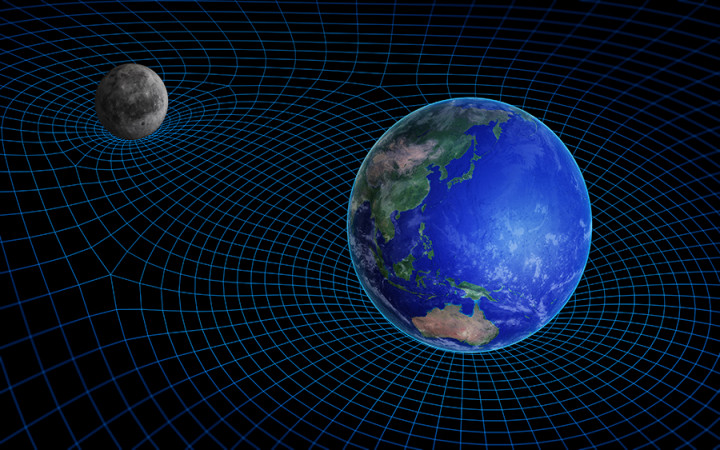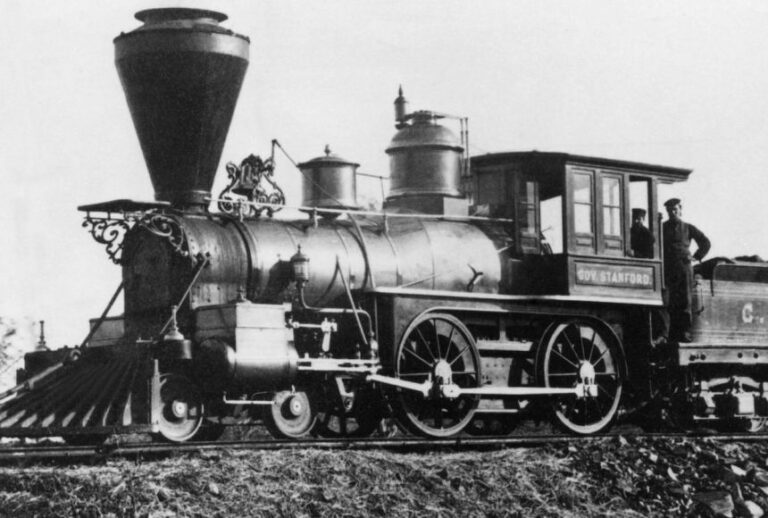Unravel the enigmatic intricacies of time with us as we embark on a captivating journey into the captivating world of physics and the human perception of time. The perception of time remains one of the most complex and fascinating areas of study, intertwining the realms of physics, psychology, and philosophy. This deep dive will explore these intriguing intersections, elucidating the mechanisms that govern our perception of the fourth dimension and its overarching implications on our existence.
Within the realm of physics, the concept of time has persistently perplexed the greatest scientific minds. From Einstein’s theory of relativity, where time is an intertwined part of the very fabric of the universe, to quantum physics, where it becomes a much more nebulous entity, we’ll delve into the scientific theories that have aimed to decipher this universal mystery. With cutting-edge research, we will attempt to illuminate the concept of time from a scientific perspective.
Parallelly, the way humans perceive time remains an enigma worth unraveling. 🕰️ It’s no secret that our perception of time can differ dramatically depending on our emotional state, age, and even cultural background. Exploring the complex web of biological, psychological, and environmental factors that influence how we experience time can provide intriguing insights into the human mind and its relationship with time. Join us in this fascinating exploration as we delve deeper into the mysteries of time. 🚀
Unraveling Time in Physics
Time, as we understand it in physics, is a rather mysterious and elusive concept. It is one of the fundamental quantities in the physical universe, standing alongside space, mass, and electric charge as a foundational pillar of the laws that govern reality. Yet, unlike the other quantities, time possesses a unique and defining characteristic—it flows in one direction. This directional quality is known as the arrow of time, a concept that continues to captivate and puzzle scientists and philosophers alike.
The arrow of time refers to the observation that time seems to move inexorably forward, from the past toward the future, and never in reverse. We remember yesterday but not tomorrow. Eggs break, but they don’t spontaneously reassemble. People grow older, never younger. While the equations of physics—from Newton’s laws to quantum mechanics—are largely time-symmetric (they don’t care whether time moves forward or backward), our everyday experience of time is decidedly one-way. This contradiction has prompted deep investigation into the underlying mechanisms that might explain this asymmetry.
One of the most widely accepted explanations arises from thermodynamics, particularly the Second Law of Thermodynamics, which states that the entropy of an isolated system tends to increase over time. Entropy, often described as a measure of disorder or randomness in a system, provides a thermodynamic basis for the direction of time. In this context, the universe began in a state of relatively low entropy—highly ordered—and has been moving toward a state of higher entropy—greater disorder—ever since. From this perspective, the forward flow of time corresponds to the natural progression from order to disorder, a journey dictated by the irreversible processes of heat flow, chemical reactions, and information dispersion.
In cosmology, this entropy-based arrow of time is connected to the initial conditions of the universe. The Big Bang is believed to have produced a remarkably low-entropy state, which set the direction for time as we experience it. As the universe expands and entropy increases, so too does our perception of time moving forward. Some physicists have even suggested that if the universe were to eventually contract, the arrow of time might reverse—although this remains a speculative and hotly debated idea.
Another perspective comes from Einstein’s theory of relativity, which reshaped our understanding of time by merging it with space into a single entity known as space-time. In Einstein’s view, time is not an absolute, universal tick-tock that flows equally for everyone. Instead, it is relative, experienced differently depending on an observer’s speed and gravitational environment. This leads to phenomena such as time dilation, where time appears to slow down for objects moving at high velocities or near massive bodies like black holes. These effects have been confirmed experimentally—most famously through precision clocks placed aboard high-speed jets or satellites.
Yet, even in relativity, the direction of time remains puzzling. While the theory allows for different rates of time passage, it does not inherently explain why we perceive a forward flow. Some interpretations suggest that time is just another dimension—like space—and that past, present, and future all coexist in a block universe. In this model, time doesn’t “flow” at all—it simply is. Our sense of temporal movement, then, could be a cognitive illusion, a byproduct of how our brains process and remember events.
In summary, physics presents multiple layers of understanding when it comes to time. Whether viewed through the lens of entropy, relativity, or cosmological evolution, time remains both a measurable phenomenon and a profound mystery. Unraveling its nature continues to challenge the boundaries of scientific thought, inviting us to consider not only how the universe works, but how we experience its unfolding. As we peer deeper into time’s fabric, we may uncover answers that not only reshape science but also expand our very perception of reality.
The Role of Entropy
Among the many scientific attempts to understand the arrow of time, one of the most compelling and widely accepted explanations comes from thermodynamics, specifically the Second Law of Thermodynamics. This foundational principle states that in any isolated system, the total entropy—often described as the measure of disorder, randomness, or the number of possible microscopic configurations—can never decrease over time. It may remain constant under idealized conditions, such as in a perfectly reversible process, but in all spontaneous, real-world processes, entropy tends to increase. This tendency introduces an irreversibility to physical processes that aligns closely with our perception of time moving forward.
Entropy can be thought of as a kind of natural clock. In a state of low entropy, a system is highly ordered, with fewer possible configurations. As time progresses, interactions within the system increase the number of possible arrangements, and the system naturally evolves into a state of higher entropy, or greater disorder. This unidirectional increase in entropy provides a thermodynamic arrow of time, anchoring the concept of “before” and “after” in the evolution of systems from order to chaos.
Consider, for example, a hot cup of coffee placed on a table in a cold room. Over time, the coffee cools down and the surrounding air warms slightly, moving toward a thermal equilibrium. The heat spontaneously spreads from the hotter object to the cooler one—not the other way around. This is a process where entropy increases. The reverse, where cold coffee spontaneously becomes hot again while the room cools, would involve a decrease in entropy and never occurs in nature, not because it’s physically impossible in theory, but because it’s statistically improbable to the point of impossibility.
This statistical understanding of entropy, introduced by Ludwig Boltzmann, revolutionized thermodynamics by tying macroscopic behavior to the probabilities of microscopic states. Boltzmann’s interpretation shows that systems naturally evolve toward configurations with the highest number of microstates, because these configurations are the most probable. From this perspective, the arrow of time is a manifestation of our universe’s tendency to evolve toward more probable states—those of higher entropy.
The concept of entropy also plays a crucial role in cosmology. The early universe, immediately after the Big Bang, was surprisingly homogeneous and low in entropy despite being extremely hot and dense. This initial low-entropy state is what allows the arrow of time to exist at all. As the universe expands and structures such as stars, galaxies, and black holes form, the overall entropy continues to increase. The fact that the universe started in such an improbably ordered state remains one of the deepest mysteries in physics, and understanding this initial condition is key to understanding the true nature of time’s flow.
In summary, entropy provides not only a quantitative measure of disorder, but also a conceptual anchor for the direction of time. It transforms our subjective sense of time passing into an objective, physical principle grounded in probability and irreversible change. As systems move from order to disorder, from simplicity to complexity, and from potential to decay, entropy serves as the invisible hand that pushes time forward—relentlessly and irreversibly.
Time and Relativity
Einstein’s theory of relativity also offers an explanation for the arrow of time, though in a different context from thermodynamics. According to the special theory of relativity, proposed in 1905, time and space are not independent but are interconnected in a four-dimensional construct known as the space-time continuum. This continuum treats time as a dimension similar to space, fundamentally changing how we understand motion and causality.
One of the key insights from relativity is that time is relative, meaning it does not flow at the same rate for all observers. The experience of time depends on one’s relative motion and position in a gravitational field. This leads to phenomena such as time dilation, where time passes more slowly for objects moving at high speeds or in strong gravitational fields compared to those at rest or in weaker gravity. These effects have been confirmed through experiments, including those involving precise atomic clocks on satellites and fast-moving aircraft.
Although relativity does not itself prescribe a single direction for time, it profoundly reshapes our conceptual framework, suggesting that the past, present, and future may all exist simultaneously within the fabric of space-time. This idea challenges our intuitive, linear experience of time and supports the notion of a block universe, where all points in time are equally real.
Space-time Continuum
Space-time is a model that combines space and time into a single interwoven continuum. The space-time structure is integral to the theory of relativity. In this theory, the speed of light is the same for all observers, regardless of their motion or the motion of the source of light. The concept of time dilation is a fundamental aspect of Einstein’s theories. This principle holds that time passes at different rates for people depending on their relative motion or gravitational field. The stronger the gravity or the faster the motion, the more time will appear to slow down.
The Perception of Time
Despite the absolute nature of time in physics, our perception of time is highly subjective and varies from person to person. This is often referred to as the psychological time or perceived time.
The Impact of Attention and Memory
Our perception of time is influenced by numerous factors, including attention, memory, and the nature of our activities. For example, when we are engrossed in an activity or experiencing something novel or exciting, time seems to pass more quickly. On the other hand, when we are bored or waiting for something, time seems to drag on. This is known as the time dilation effect. It’s a psychological phenomenon where the perceived duration of an event is longer than its actual duration.
Neuroscience and Time Perception
From a neuroscience perspective, time perception is linked to the functions of various brain structures. The basal ganglia, cerebellum, prefrontal cortex, and parietal cortex are among the brain areas involved in time processing.
Brain Mechanisms
Several mechanisms have been proposed for how the brain measures time. Some theories suggest that we have an internal ‘clock’ that ticks at a certain rate, and we estimate time by counting these ticks. Other theories propose that the brain uses the sequential order of events or the amount of neural activity to judge time.
Effects of Age and Drugs on Time Perception
Age and psychoactive drugs also significantly affect our perception of time. It is commonly observed that time seems to pass more quickly as we get older.
The Role of Psychoactive Drugs
Psychoactive drugs can dramatically alter time perception. Stimulants like cocaine and amphetamines can speed up our internal clock, making time seem to pass more slowly. Conversely, depressants and psychedelics often slow down the internal clock, making time appear to stretch out.
In conclusion, the mysteries of time are vast and varied. They range from fundamental questions in physics to intriguing anomalies in human perception. Yet, despite the many unanswered questions, our quest to understand time continues to drive many areas of scientific research.
Conclusão
In conclusion, the captivating realm of physics and time perception presents a myriad of mysteries for us to unravel. Our perception of time, while deeply rooted in our everyday experience, continues to be a topic of intense study and debate in both physics and cognitive science. The elusive nature of time and its multifaceted characteristics hold profound implications for our understanding of reality.



